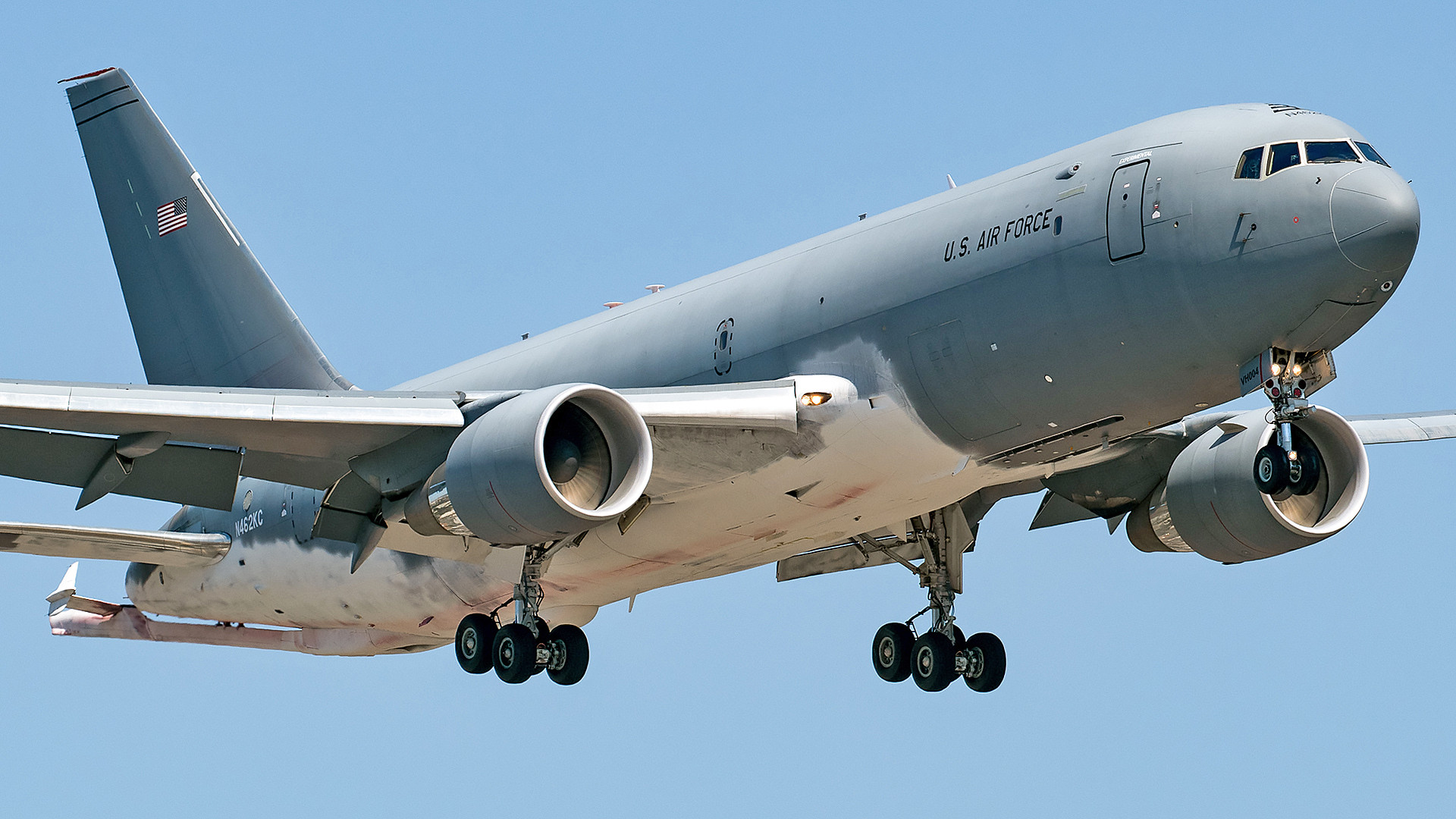A Boeing KC-46A Pegasus aerial refueling tanker has been spotted at Boeing Field just outside of Seattle, Washington with an odd whitewashing of sorts along much of the underside of its fuselage, as well as underneath parts of its wings and rear stabilizers. The appearance of this aircraft comes as Boeing continues to work to fix long-standing and serious problems with the KC-46A’s refueling boom and the remote vision system that boom operators use to guide it into receiving aircraft. In light of these setbacks, the U.S. Air Force, the main operator of these tankers, remains unwilling to use them to support combat operations unless there is a dire emergency demand for them.
Dylan Phelps of Boneyard Safari shot some great photographs of the KC-46A question, seen at the top of this story and below, in the air and on the ground at Boeing Field, which is also known as King County International Airport, located just south of Seattle.
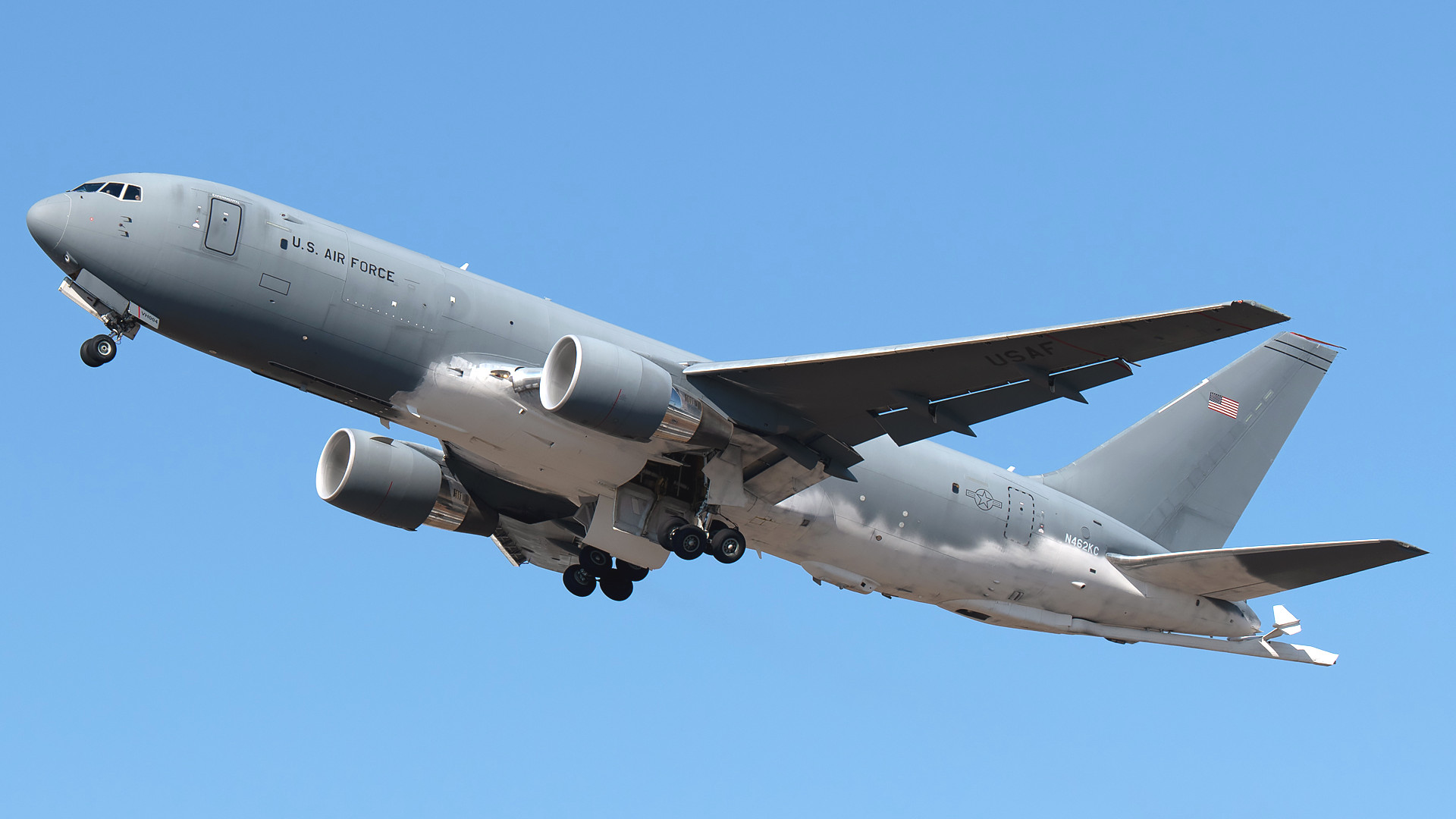
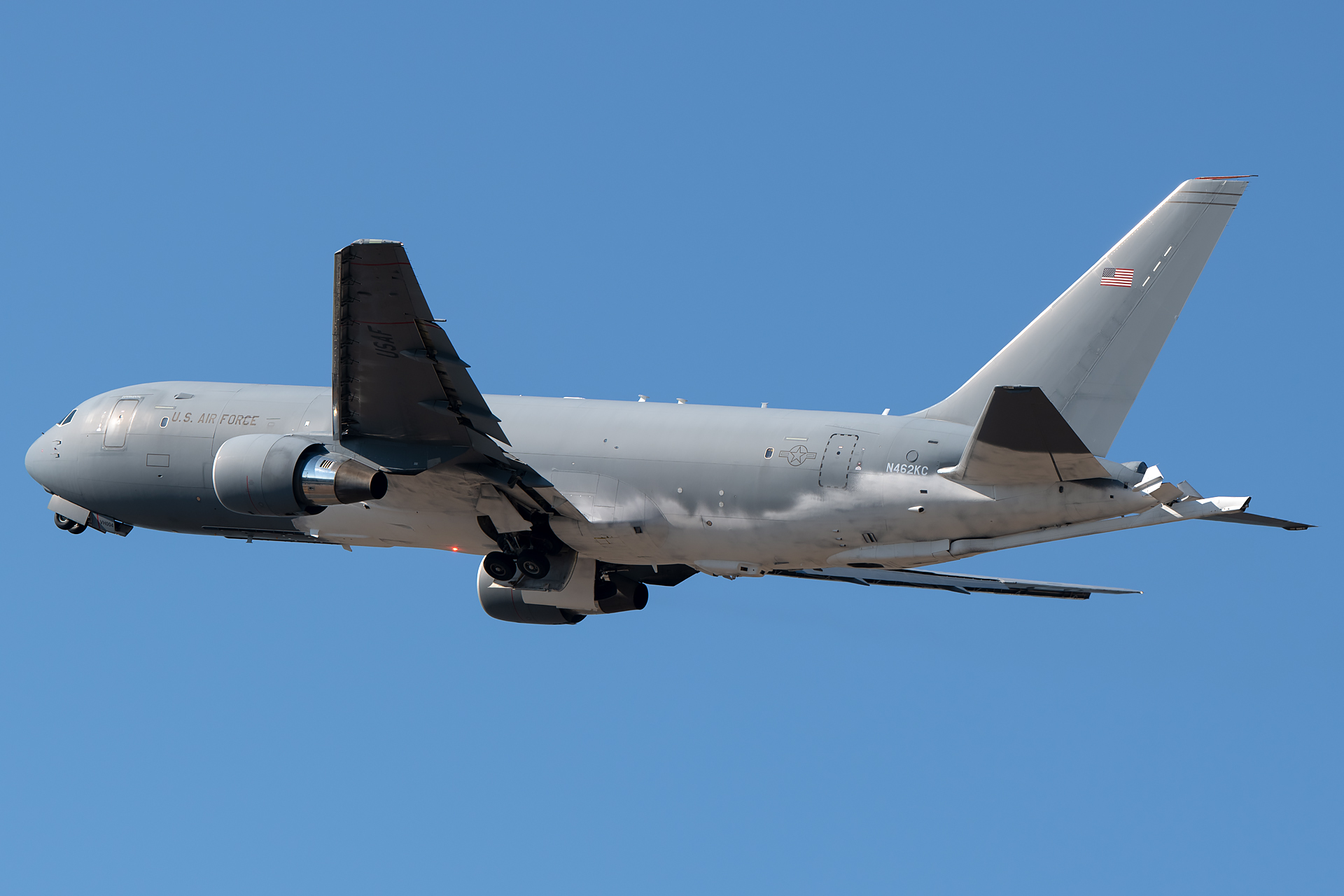
At a quick glance, the aircraft has a look that is somewhat reminiscent of the “Shamu” paint scheme – so nicknamed for its killer whale-like appearance – that older Air Force KC-135 and KC-10 tankers wore for a period before they received their current all-gray liveries. More recently, a Shamu-like paint scheme has appeared on a number of ex-Republic of Singapore Air Force KC-135s that are now operated by private contractor Meta Aerospace.

However, in Dylan Phelps’ pictures, the relatively crude nature of whatever this paint or other coating might be is plainly visible, and it has a distinctly temporary look to it. The whitewashing extends along the bottom of the fuselage from just in front of the wing root to the tail, with the boom having also been painted. Portions of the undersides of the wings between the fuselage and the engine pylons, to include the exterior of some of the control surfaces, along with sections underneath the rear stabilizers, have also been covered.

This particular KC-46A has U.S. Air Force titles and insignia, as well as an American flag on both sides of the tail, but carries a U.S. civil registration code, N462KC, rather than a military serial number. The Federal Aviation Administration’s (FAA) online database shows that it has been registered to Boeing since 2014.

We have reached out to Boeing seeking more information about this aircraft. Air Mobility Command, which oversees the bulk of the Air Force’s tanker fleets, including most of its current inventory of at least 59 KC-46As, also directed The War Zone to Boeing in response to queries about the jet.
While we don’t know the story behind this unusual paint job, one possibility could be that the tanker suffered a mishap of some kind. The white-colored areas are where one would expect to see damage on the underside of aircraft that has run off the runway onto a rougher surface, with debris churned up by its landing gear then battering its underside.
Though there is no indication that the two things are in any way related, earlier this week, a KC-46A assigned to the New Hampshire Air National Guard’s 157th Air Refueling Wing, which had a congressional delegation onboard at the time, had to make an emergency landing after its boom ended up stuck in the deployed position. You can read more about that incident here.
It is also worth pointing out that N462KC is a known test aircraft and was, among other things, the KC-46A to conduct the type’s first ever aerial refueling, where it transferred 1,600 pounds of gas into an Air Force F-16C Viper fighter jet, in 2016. As such, it is possible that the whitewashing might somehow be related to modification or upgrade work on the aircraft.

At the same time, at least based on The War Zone‘s initial analysis of Dylan Phelps’ photographs, there do not appear to be any major changes visible on the exterior of the jet when compared to existing production examples.
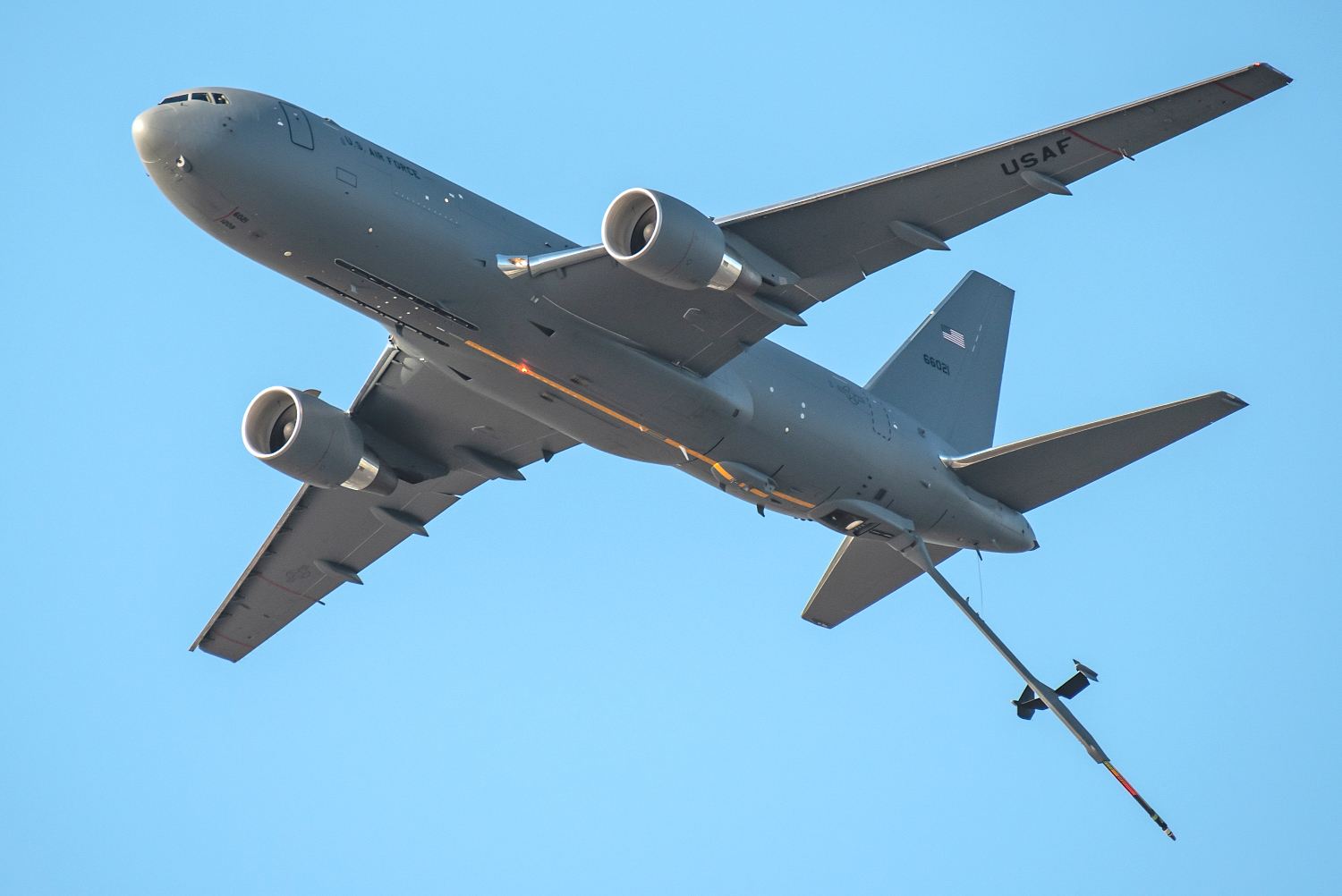
Boeing is currently under contract to fix an issue with stiffness in the boom on the KC-46A, something that is set to involve hardware and software changes, as well as integrate an entirely new Remote Vision System (RVS) into the aircraft. The existing RVS has proven to be particularly problematic, being potentially dangerous to use and running the risk of making boom operators physically ill.
Unlike on previous Air Force tankers, where boom operators would conduct their tasks from positions physically at the rear of the aircraft, these individuals onboard KC-46As work in the main cabin. They steer the Pegasus’ boom into receiving aircraft via video feeds from an array of video cameras at the rear of the jet. The feeds are presented in a hybrid 2D/3D format, with boom operators wearing special glasses, similar to those that you might use to watch a modern 3D movie, to help with depth perception, at least in principle. To put it simply, the current RVS does not work as intended and Air Force KC-46A boom operators currently have to use a variety of workarounds to do their job at all.

Another possibility might be that Boeing has painted the bottom N462KC in this way to see whether a simple change in the color or composition of the paint on its underside might help mitigate some of the RVS issues, at least in the interim. Boom operators regularly have to deal with degraded or complete losses of visibility due to the cameras being blinded by glare or the feed going dark due to shadows.
It is of course, entirely possible that there is some other explanation entirely for this coating. Regardless, it is still a curious paint scheme to emerge on one of those long-troubled tankers.
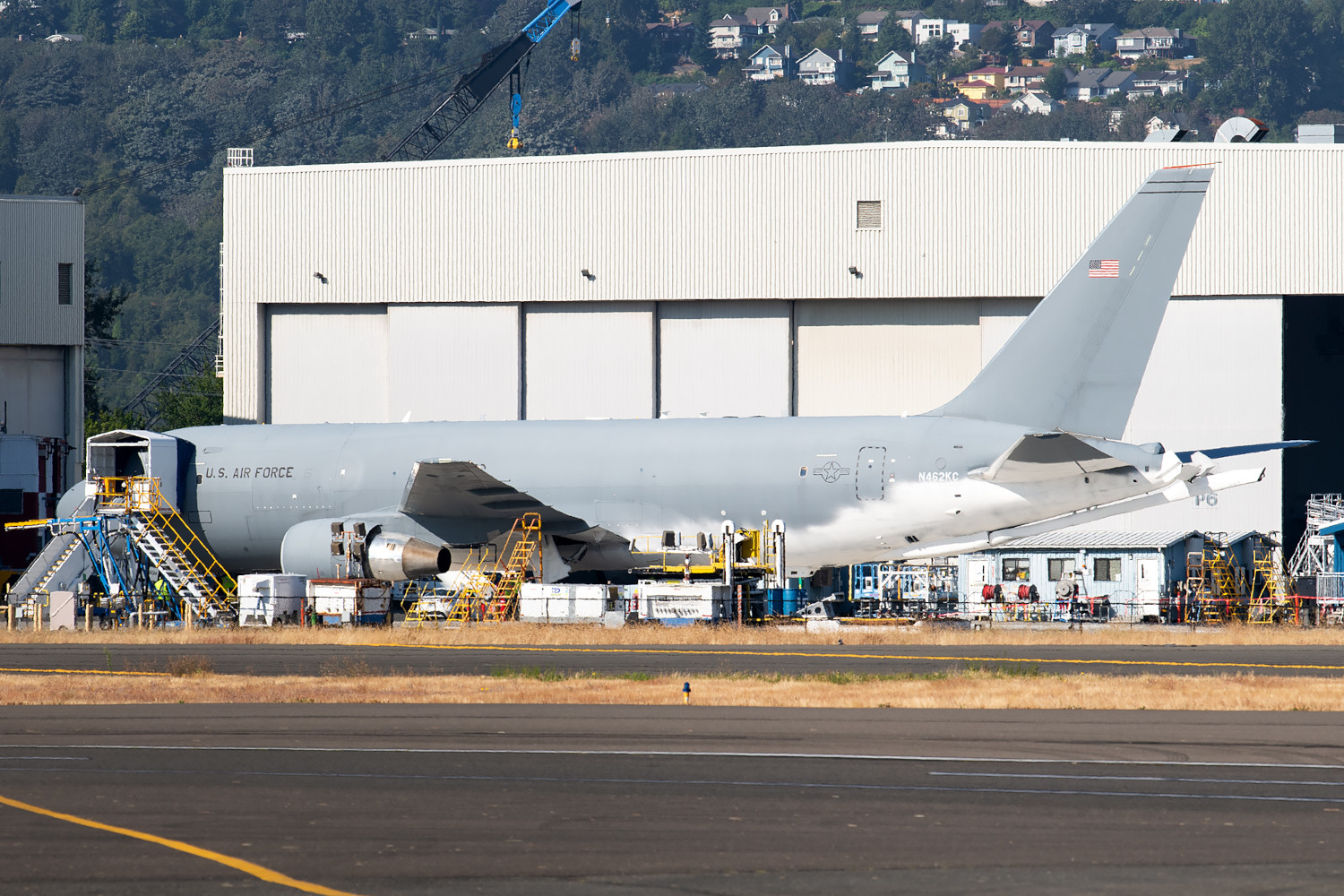
We will certainly update this story as more information becomes available.
Update 5:35 PM EST:
After publishing this story, readers pointed out another possibility, that the white-colored coating could be specialized paint designed to react with fuel or hydraulic fluid. Such paint, which turns red or pink when exposed to the fluids in question, is often applied to aircraft to help trace the source of a leak or as part of other testing. What looks to be pink-red streaking is visible in some of the pictures along the underside of N462KC’s fuselage and on its boom, which could lend further credence to this explanation.
Update 9:35 PM EST:
Boeing has now responded to our queries about this aircraft with a brief statement. “We regularly conduct flight testing for a variety of reasons and don’t typically disclose the specifics of that testing,” a company spokesperson said.
Readers have also continued to highlight the strong likelihood that the white-colored coating was part of an effort to either trace a fuel or hydraulic fluid leak or otherwise to help with testing to determine the flow of fluids along the underside of the aircraft. A source with direct knowledge of N462KC’s recent activities has now confirmed to us that the paint was applied as part of testing of a modification to the design of the aircraft’s aerial refueling receptacle drain line.
Contact the author: joe@thedrive.com
